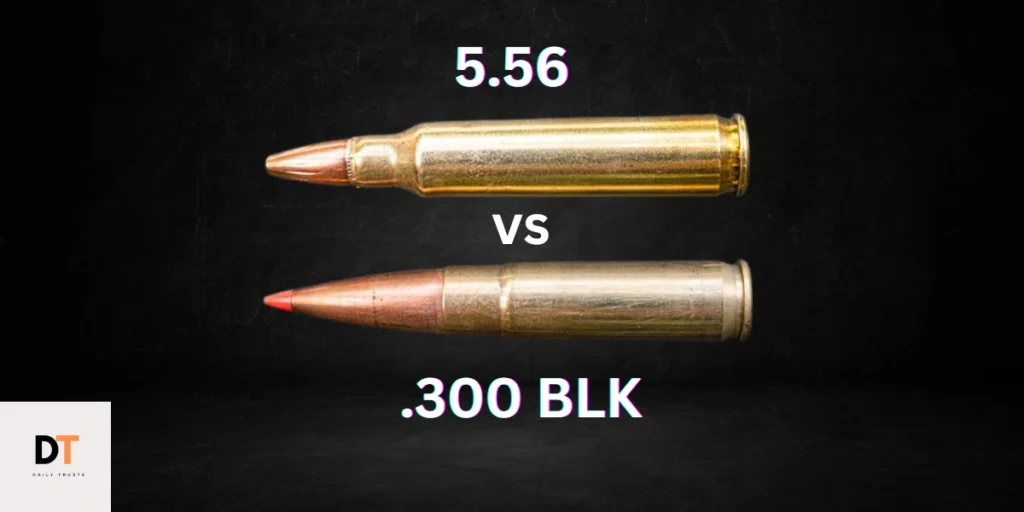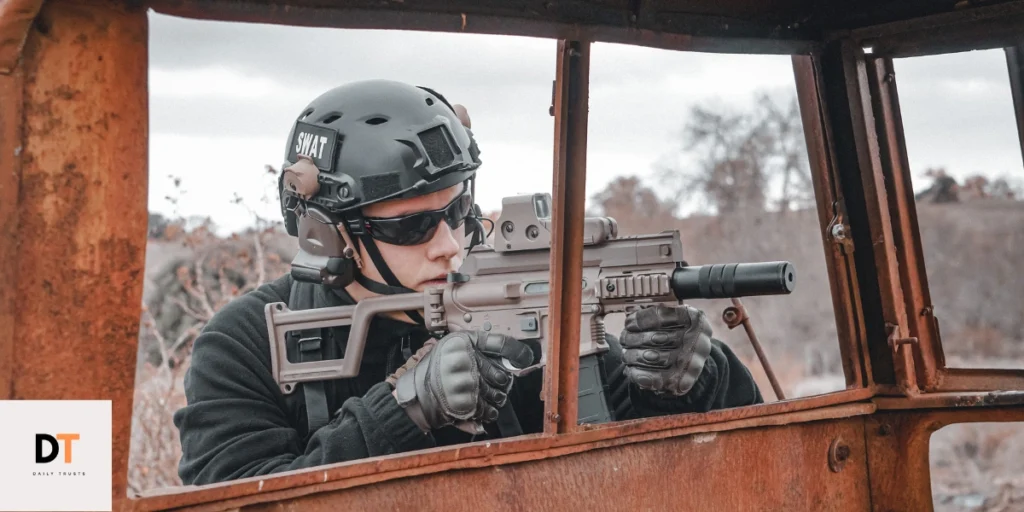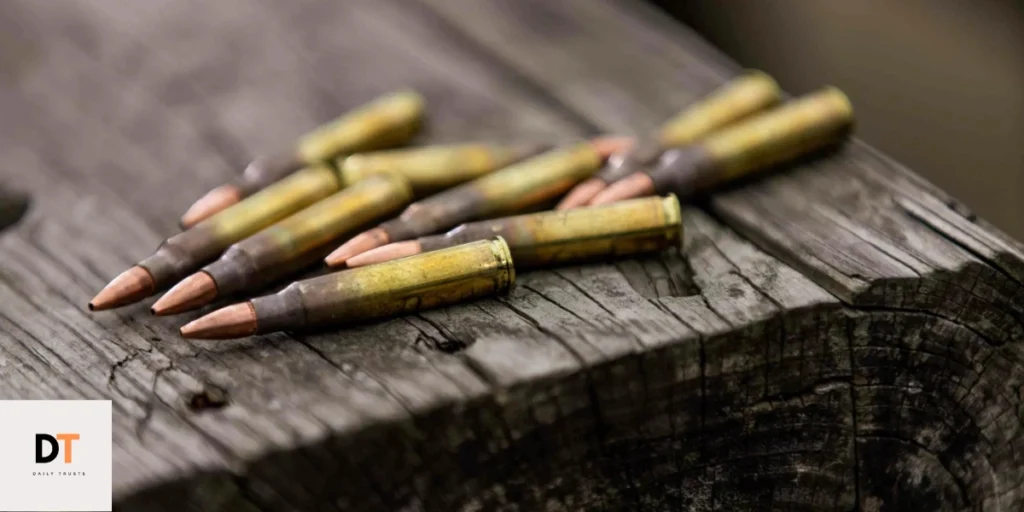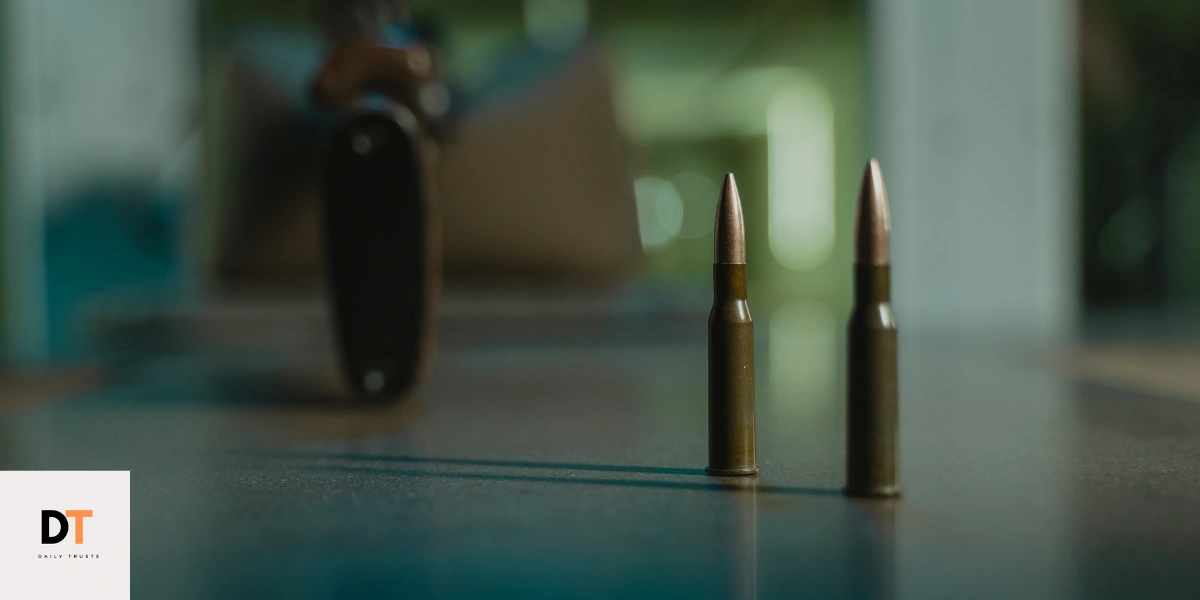5.56 vs 300 Blackout: Which Cartridge Is Best for Your Needs?
Choosing the right rifle cartridge is a critical decision for any shooter, whether you’re a recreational enthusiast, a tactical operator, or a seasoned hunter. Among the most widely discussed and utilized cartridges in the firearms world are the 5.56 vs 300 Blackout. Both have earned their place as classics in the weapons industry due to their unique capabilities that cater to various shooting scenarios.
Having tested and reviewed these cartridges extensively, our team of firearms experts and seasoned shooters is here to guide you through the key differences. This comprehensive guide draws from hands-on experience, field tests, and real-world applications to ensure you have all the information needed to make an informed choice tailored to your specific needs.
Whether you’re considering the high-velocity precision of the 5.56 NATO or the versatility and stopping power of the 300 Blackout, understanding their advantages and limitations is essential for selecting the best cartridge for your purpose.
Also read:
Why Compare 5.56 and 300 Blackout?
The 5.56 NATO and 300 Blackout are two of the most widely used cartridges in the AR-15 platform. While the 5.56 is a time-tested military round, the 300 Blackout was designed to meet modern demands, particularly for suppressed shooting and close-quarters combat. Comparing these two cartridges helps shooters decide which is better suited for their specific needs.
A Brief History of Both Cartridges
The 5.56 NATO originated in the late 1950s as a lightweight, high-velocity cartridge for military use. Its design prioritized range and accuracy, making it a standard round for decades. In contrast, the 300 Blackout (or 300 AAC Blackout) was introduced in 2010 by Advanced Armament Corporation. It was developed to address shortcomings in suppressed and subsonic shooting while maintaining compatibility with the AR-15 platform.
Cartridge Specifications

The ballistic performance of the 5.56 NATO and 300 Blackout cartridges highlights their distinct capabilities, each optimized for different scenarios:
5.56 NATO
- Ballistic Profile: The 5.56 NATO is designed for high-velocity performance, which makes it ideal for long-range engagements and precise accuracy.
- Muzzle Velocity: Often exceeds 3,000 feet per second (fps) with standard loads, allowing for flatter trajectories over longer distances.
- Energy: Due to its lighter bullet, energy transfer on impact is lower compared to the 300 Blackout.
- Effective Range: Typically effective up to 500–600 yards, with reduced lethality beyond this range.
- Recoil: Minimal recoil, making it suitable for rapid follow-up shots and controlled fire.
300 Blackout
- Ballistic Profile: Optimized for heavier bullets and subsonic performance, excelling in close-quarters or suppressed operations.
- Muzzle Velocity: Subsonic loads typically travel at around 1,000–1,050 fps, while supersonic loads can exceed 2,000 fps.
- Energy: The heavier 30-caliber bullets provide greater energy transfer on impact, delivering superior stopping power.
- Effective Range: Effective up to 300 yards for supersonic loads; subsonic loads are best suited for shorter ranges.
- Recoil: Slightly more recoil compared to the 5.56 NATO, but still manageable for most shooters.
Key Considerations
- Application: The 5.56 NATO shines in military, law enforcement, and hunting applications where range and precision are critical. The 300 Blackout, with its heavier projectiles and subsonic capabilities, is preferred for close-range, urban, or suppressed scenarios.
- Compatibility: Both cartridges can be used in AR-15 platforms, but the 300 Blackout requires a barrel change due to its different bore sizes.
- Suppressed Use: The 300 Blackout is specifically designed to perform well with suppressors, especially in subsonic configurations, making it quieter than the 5.56 NATO.
Origin and Development
Since its adoption in the 1960s, the 300 Blackout vs. 556 cartridge has been a mainstay of contemporary militaries around the world. It was created as a high-velocity, lightweight round that reduced recoil and increased ammunition capacity, replacing the larger 7.62 NATO for infantry use. Long-range accuracy and efficacy were key design considerations, especially for standard-issue rifles like the M16 and M4.
In contrast, the Advanced Armament Corporation (AAC) created the 300 Blackout for special operations in the late 2000s. By providing a more adaptable round that could function well in suppressed and short-barreled rifles while being compatible with AR-15 platforms, it aimed to overcome the shortcomings of the 5.56. Without changing their magazines or lower receivers, shooters may use them 300 Blackout ammunition by just switching the barrel.
Ballistic Performance
1. Velocity and Range
Depending on the load and barrel length, the 5.56 NATO is known for its high velocity, which frequently exceeds 3,000 feet per second (fps). Because it can sustain accuracy and lethality up to 500 yards or more in the hands of a trained shooter, it is perfect for long-range confrontations.
The velocity of the 300 Blackout vs. 556 is lower, usually falling between 1,900 and 2,500 fps for supersonic ammunition. Subsonic versions hover at about 1,000 frames per second and are intended for suppressed shooting. Because of this, the 300 Blackout performs better in close-quarters combat (CQC) and medium-range encounters but less well at long-range.
2. Energy and Terminal Performance
The energy transfer of the 300 Blackout is excellent. Its considerable stopping power, which comes from bigger bullet weights (110–220 grains as opposed to the 55–77 grains of the 5.56), makes it useful for self-defense and against the larger game. Its lethality is further increased by subsonic bullets, which have remarkable mass retention and lower over-penetration hazards.
At high speeds, the 5.56 NATO compensates with hydrostatic shock despite having less energy. Its faster, smaller projectiles have the potential to shatter when struck, seriously damaging tissue. In contrast to the 300 Blackout, its lesser weight may cause it to struggle against obstacles and heavily plated targets.
Applications and Use Cases

1. Military and Law Enforcement
The 5.56 NATO remains the standard for military and law enforcement due to its lightweight ammunition, long-range capabilities, and proven performance. The 300 Blackout, however, is gaining traction in specialized roles, particularly for suppressed operations and close-quarters combat.
2. Hunting
Hunters favor the 300 Blackout for its superior terminal performance and ability to take down medium-sized game like deer and hogs. The 5.56 can be used for smaller games but lacks the stopping power required for larger animals.
3. Home Defense
For home defense, the 300 Blackout is often preferred due to its reduced over-penetration risk and superior performance in close quarters. The 5.56, while effective, can pose a higher risk of over-penetration in confined spaces.
4. Suppressed Shooting
The 300 Blackout was specifically designed for suppressed shooting, making it the clear winner in this category. Its subsonic loads reduce noise significantly, while the 5.56 struggles to maintain effective performance when suppressed.
Cost and Availability
1. Ammunition Prices
The cost of ammunition is a critical factor for many shooters. Generally, 5.56 NATO is more affordable and widely available due to its military use and mass production. The 300 Blackout, while increasingly popular, tends to be more expensive, especially for subsonic rounds. This price difference can be significant for high-volume shooters.
2. Market Availability
The 5.56 NATO has a clear edge in terms of availability. Most gun shops and online retailers stock a wide range of 5.56 ammunition in various loads. The 300 Blackout, while readily available, may not have the same variety or consistency in supply, particularly during times of high demand.
Pros and Cons
Advantages of 5.56
- Lightweight ammunition allows for carrying more rounds.
- Excellent long-range performance with a flat trajectory.
- Widely available and cost-effective.
- Proven reliability in military and law enforcement applications.
Advantages of 300 Blackout
- Superior stopping power at close range.
- Excellent performance with subsonic ammunition for suppressed shooting.
- Versatile for both hunting and tactical applications.
- Works well in shorter barrels without significant performance loss.
Limitations of Each Cartridge
The 5.56 struggles with over-penetration in close quarters, and its performance diminishes significantly in short-barrel rifles. The 300 Blackout, on the other hand, has a shorter effective range and higher ammunition costs, which may deter some shooters.
Case Dimensions and Safety Considerations
Because it simply needs a barrel swap to be used in an AR chambered 223/5.56, the 300 BLK is a favorite among AR enthusiasts. Due to the 223 case being reduced in size to accommodate a. 30-caliber bullet, the case dimensions are comparable, which accounts for this compatibility. Both cartridges have the same overall length, rim diameter, and base diameter (0.376″, 0.378″, and 2.26″, respectively). But the 300 BLK has a bigger neck diameter (0.334″ vs. 0.253″) and a shorter case length (1.368″ vs. 1.760″). However, these parallels may be dangerous. A.223 barrel can chamber a 300 BLK round with specific bullet lengths and seating depths. This mismatch may result in a severe pressure surge if shot, which could harm the gun and injure the shooter.
Grain Weights and Ammunition Variety
One notable characteristic of the 300 BLK is that its bullets are somewhat heavier than those of the NATO 5.56x45mm cartridges. Averaging 2-4 times the grain weight of the majority of 5.56 bullets, 300 BLK bullets range from 110 to 125-grain supersonic rounds to subsonic possibilities like 200 and 220 grains. Both cartridges provide a wide selection of ammunition choices for hunting, self-defense, competitive shooting, and leisure range use. It’s crucial to take into account how these variations affect their adaptability and appropriateness for various applications before delving into their particular ballistic performance.
Which is Better for Different Applications?

1. General Use and Plinking
5.56 NATO is the cost-effective option for drills or casual shooting. It is perfect because it is reasonably priced and performs similarly at usual plinking ranges. Muscle memory won’t be impacted by 5.56 practice if you eventually move to 300 BLK for other reasons.
2. Self-Defense
Short barrels and suppressed configurations make the 300 BLK is an excellent choice for self-defense and is perfect for use in close quarters or interior environments. Although subsonic, supersonic defensive shots lessen the chance of over-penetration 300 BLK rounds can be difficult. However, 5.56 NATO is a good substitute, particularly in unsuppressed systems, because it provides more accessible and less expensive defensive ammunition.
3. Hunting
5.56 NATO offers a wide variety of frangible ammunition options, making it ideal for hunting small animals and varmints under 200 yards. For bigger game, such as hogs or deer. Better performance in thick brush and superior terminal ballistics are offered by 300 BLK. However, because of its lesser velocity, the 300 BLK is best employed inside 150 yards for ethical kills.
4. SHTF Scenarios
5.56 NATO’s widespread use, low cost, and extended range make it an attractive option in survival scenarios. On the other hand, 300 BLK excels in larger games due to its suppressed capabilities, barrier penetration, and efficacy. Although 5.56 is easier to obtain, being able to use both calibers improves readiness.
5. Shooting Suppressed
When it comes to suppressed shooting, 300 BLK leads. Reliability is limited by Subsonic 5.56’s frequent cycle problems. On the other hand, because of its suppressed usage design, the 300 BLK provides outstanding quietness and reliable performance, particularly within 150 yards.
Choosing the Right Ammunition for Your Needs
Gear is always determined by objective, and the caliber you select while constructing your ideal AR-15 is no different. Your cartridge selection should be based on your main goals. 5.56 will always be the preferred round for anyone on a budget. He is a good all-around player with equal ability at 50 and 500 yards. Few applications require complete quiet, so even while it won’t be hearing safe with a suppressor, its adaptability more than makes up for its short-range performance shortcomings.
In contrast, 300 Blackout is actually only necessary if you fall into one of a few particular categories. For instance, suppressed use strongly favors the 300 Blackout for terminal performance as well as the overall sound profile. 5.56 is just not comparable in terms of suppression because it is a completely supersonic bullet.
For ultra-short-range use, 300 Blackout again gets the nod, not only for its terminal ballistics and single-shot effectiveness but also because it can take advantage of shorter barrels without compromising its capability, making it ideal for highly compact firearms, with or without a suppressor.
Conclusion About 5.56 vs. 300 Blackout
Choosing between 5.56 NATO and 300 Blackout depends on your specific needs, budget, and intended applications. The 5.56 NATO is a versatile, cost-effective round, ideal for general use, long-range shooting, and scenarios requiring high ammo availability. Its lightweight design and widespread accessibility make it a solid choice for plinking, hunting small game, and military or law enforcement use.
On the other hand, the 300 Blackout shines in specialized roles like suppressed shooting, close-quarters defense, and hunting larger games at shorter ranges. With its superior stopping power and compatibility with shorter barrels, it excels in scenarios where noise reduction and terminal performance are critical. While more expensive and less available than 5.56 NATO, 300 Blackout offers unique advantages for shooters prioritizing versatility in specific environments.
FAQS About 5.56 vs. 300 Blackout
These are some of the most common inquiries concerning 5.56 vs. 300 Blackout. To make sure you have all the information you require, we have included thorough responses. Our team of professionals is here to help if you still need clarification or have any questions.
Please don’t hesitate to get in touch with us at any time; we’re always available and willing to assist! “Still unsure which cartridge is right for you? Contact us for personalized advice!”
1. What are the primary differences between 5.56 NATO and 300 Blackout?
The 5.56 NATO offers higher velocity, better long-range accuracy, and lower cost, while 300 Blackout provides greater stopping power, and better performance in short barrels, and is optimized for suppressed shooting.
2. Which cartridge is better for general use?
For general use and plinking, 5.56 NATO is more affordable and practical due to its widespread availability and similar performance at typical shooting ranges.
3. Which is better for self-defense?
The 300 Blackout is superior for close-quarters self-defense, particularly in suppressed setups, but 5.56 NATO is a reliable, cost-effective alternative for unsuppressed configurations.
4. Can I use 300 Blackouts in my 5.56 NATO rifle?
No. While the cartridges share similar dimensions, attempting to chamber 300 Blackout in a 5.56 NATO barrel can result in catastrophic failure and injury.
5. Is 300 Blackout better for hunting?
For small games, 5.56 NATO is ideal, but for larger games like deer or hogs, 300 Blackout offers better terminal performance and less risk of deflection in thick brush.
6. Which cartridge is better for suppressed shooting?
300 Blackout is the clear winner for suppressed shooting, as its subsonic rounds are quieter and more reliable compared to subsonic 5.56 NATO rounds.
7. Which cartridge is more affordable and available?
5.56 NATO is generally cheaper and more widely available, making it a better choice for high-volume shooting or stocking up.
8. Can I switch between 5.56 NATO and 300 Blackout on the same AR-15?
Yes, you can switch between the two by changing the barrel, as 300 Blackout is designed to be compatible with the AR-15 platform without requiring changes to the magazine or lower receiver.
